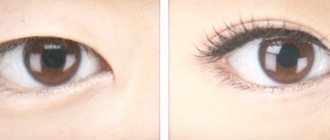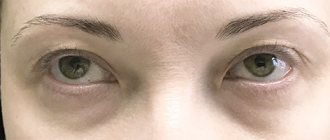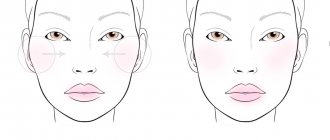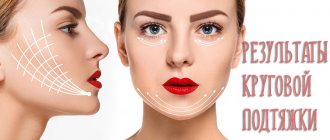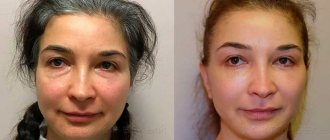Igor Bely plastic surgeon negative reviews
October 17, 2020Many plastic surgeons are called “celebrity” because their clients include celebrities. Public people want to improve their appearance and turn to the most trusted professionals, because if a surgeon makes a mistake and disfigures the face or figure of a celebrity, then the latter will have to forget about their career.
Moscow plastic surgeon Igor Anatolyevich Bely is also called one of the star specialists. He has been working in aesthetic medicine for over 20 years. Among his patients were TV presenter Anna Kalashnikova, participants in the reality show “House 2” Anastasia Kovaleva, Alexey Samsonov and other media personalities. And although most of his patients were satisfied with the changes that happened to them after the work of Dr. Bely, there are also dissatisfied ones. But before we find out in detail why the doctor received negative reviews, let’s look at what Igor Anatolyevich achieved during his career.
Who is Igor Bely?
Why does a surgeon with a good reputation get negative reviews?
Igor Bely, as many articles in print and online publications claim, is one of the most authoritative Russian specialists in the field of facial plastic surgery and rhinoplasty. Doctor of Medical Sciences, professor is the author of the dissertation “Application of laser technologies in aesthetic rhinoplasty” (2007). Moreover, Igor Anatolyevich is the author of more than two dozen scientific publications, the creator of numerous innovations and proprietary technologies in the field of rhinoplasty, facial plastic surgery and high-tech (including laser) methods of aesthetic nose correction. Dr. Bely’s original developments are recognized and used not only in Russia, but also in Europe. He also has 5 state certificates in maxillofacial surgery, general surgery, vascular surgery, microsurgery and plastic surgery.
The list of plastic surgeries he performs is very wide - rhinoplasty, all types of facelifts, eyelid correction, forehead and eyebrow lifting, mammoplasty, tummy tuck and buttock modeling...
It seems that the doctor’s merits are unconditional and impeccable, and the harmonious chorus of voices of patients satisfied with the operations does not even give a chance to negative reviews about the surgeon’s work. However, it seems that every plastic surgeon, whether in Russia or abroad, has negative stories.
Stories without a happy ending
Although Igor Bely is presented on all websites and forums as a specialist in rhinoplasty, it is his patients who talk about nose correction as an unsuccessful operation in their reviews. Some complain about post-operative asymmetry, others complain about incorrect plaster application and different nostrils, others write about breathing problems and the subsequent three repeated operations that were needed to correct the unscrupulous work of the plastic surgeon, according to the authors.
You can insert screenshots It would seem that most of the negativity is found on sites with stories from many years ago, but there are also quite recent negative reviews on the Internet - from 2020.
Why is Anna Kalashnikova unhappy with Dr. Bely’s operation?
There were dissatisfied patients with Igor Anatolyevich and among his star clients. While some leave words of gratitude, as former “House 2” participant Alexey Samsonov does, others rush to share their indignation with the press. We are talking about Anna Kalashnikova, who did not directly reproach her plastic surgeon, but spoke about her unsuccessful facial plastic surgery to a glossy magazine. The TV presenter did not like the result of the removal of Bisha's lumps, which was performed on her by Dr. Bely.
“Remember, a couple of years ago they were removed by everyone? Renee Zellweger, Madonna, Natalie Portman, Polina Gagarina and others. Then I, too, succumbed to fashion trends and, together with my friend, went for an operation. Afterwards, my friend’s face sagged, bags appeared under her eyes, and after a year she began to look five years older! I also encountered troubles after the procedure. The face looks exhausted. I have to remove the effect with various masks and vitamin injections, otherwise I would have long ago turned into a withered mummy,” Kalashnikova publicly stated.
How do you like this “withered mummy” after Igor Bely’s operation?
It is not known whether the celebrity made any claims to her doctor, but this high-profile story was enough to raise doubts among potential patients about the high qualifications of the plastic surgeon Igor Bely.
Be that as it may, the existence of negative stories (whether they are real or not) is to some extent a good sign, indicating that the doctor is not deliberately deleting all negative reviews, as some young professionals do, wanting to create an impeccable image for themselves. But all experienced plastic surgeons always say that there is no doctor who never makes mistakes.
All about blepharoplasty
Oscar Wilde said that “nothing is impossible for one who has two privileges: beauty and youth.” Indeed, success always accompanies those who know how to show themselves from the best side and present their appearance in a favorable light. Even age has ceased to be a hindrance to this. Just remember the famous icons of beauty and style. Audrey Hepburn, Brigitte Bardot, Marilyn Monroe, Angelina Jolie, Natalie Portman, Charlize Theron - all these women have the secret of amazing magic: they capture our attention with one look. It’s hard to even imagine how many men fell into their captivating web!
An open mind is indeed a very big advantage. However, due to physiological processes, due to insufficient or improper care, it is the eyes that first begin to reveal a woman’s age. This happens because the skin in the eyelid area is unusually thin, there is practically no subcutaneous fatty tissue, and therefore, over time, a network of wrinkles appears. The longer you ignore it, the more pronounced the problem becomes.
There are two ways to correct deficiencies: resort to hardware cosmetology or contact a plastic surgeon. The first option is effective only when the first age-related changes have appeared. Hardware cosmetology can cope with small wrinkles, but hernias of the upper or lower eyelids cannot be eliminated.
Eyelid surgery (blepharoplasty) is the only option for correcting sagging tissues of the lower and upper eyelids and removing hernias, which gives a good result and leaves virtually no traces of intervention.
Stages of eyelid surgery
Absolutely any surgical intervention takes place strictly in accordance with the protocol. If we are talking about eyelid surgery, then the following steps must be followed:
- Consultation with a specialist.
- Preoperative examination.
- Surgery.
- Postoperative control.
- Rehabilitation.
- Evaluation of the achieved result.
In order for eyelid surgery to be effective, the specialist strictly follows the technique of performing all manipulations during the operation. First, the surgeon marks the upper/lower eyelids with a special marker. It is along these lines that the tissue will be excised.
Blepharoplasty surgery is performed under local anesthesia or general anesthesia. The patient has the right to decide which pain relief option is right for him. But, if it comes to plastic surgery of the upper and lower eyelids (circular blepharoplasty), then the operation time increases, so it is better to use general anesthesia.
During the operation, to prevent the formation of noticeable scars, the plastic surgeon makes incisions in anatomically appropriate areas. On the upper eyelid it is a fold of skin, on the lower eyelid it is a mucous membrane, at the very edge of the growth of eyelashes.
When the incisions are ready, the surgeon will have to remove excess skin and remove fat bags, or redistribute the fat tissue. At the same time, if required, muscles are tightened and strengthened.
Finally, the specialist applies stitches using absorbable threads. Thanks to this technique, it is possible to achieve maximum aesthetics of the operation without allowing the formation of a rough scar.
Before and after photos of eyelid surgery
In planning blepharoplasty and assessing its results, great importance is given to the photography process. The plastic surgeon must take photos before and after the operation in order to:
- create a computer model of the patient’s appearance;
- identify areas of intervention;
- calculate a mathematical model of the result;
- control the rehabilitation process;
- evaluate the achieved result clearly.
Photos before and after eyelid surgery are also necessary to supplement the specialist’s portfolio. However, a plastic surgeon has the right to exhibit work only with the written consent of the patient.
Types of blepharoplasty
At the present stage of development of plastic surgery, various types of eyelid surgery and surgical techniques are used.
Depending on the nature and severity of aesthetic problems, the following are carried out:
- plastic surgery of the lower eyelids;
- upper eyelid surgery;
- circular eyelid surgery;
- correction of the shape of the eye shape.
Lower eyelid surgery. In this area, the skin is especially thin, the muscles are located almost immediately under the skin, separated from the fat layer by a thin membrane. Due to age, when collagen production decreases, as well as as a result of the influence of earth's gravity, longitudinal muscles and skin sag, adipose tissue shifts, which leads to the formation of so-called “bags” under the eyes.
These shortcomings can be corrected in two ways:
- remove excess skin and fragments of longitudinal muscles through an external incision in the lower eyelid;
- redistribute fat bags and make a slight lift by making an incision along the edge of the lower eyelid mucosa.
Upper eyelid surgery. It belongs to the category of anti-aging surgeries, since it is performed to eliminate excess skin tissue, which begins to sag with age, forming unsightly folds. The incision is made in the natural crease of the upper eyelid. The surgeon acts very carefully, excising excess tissue in such a way that, after healing, the sagging of the upper eyelid is eliminated and at the same time does not disrupt the mechanisms of closing the eye.
Circular eyelid surgery. If there are problems in the area of the lower and upper eyelids, then it is rational to perform one operation - circular blepharoplasty. This way, within the framework of one intervention, it will be possible to tighten the skin, remove hernias, and redistribute fat accumulations that create the effect of swelling.
Correction of eye shape (Europeanization of eyelids). In the last few years, the European type of face has been considered the standard of female beauty. Women of Asian appearance are characterized by a narrow eye shape, which is explained by the structural features of the organ of vision. Thus, Asian women do not have the fold in the upper eyelid, which is characteristic of European women, which is why the eyes appear swollen, and there is no effect of an open look. The Europeanization operation of the eyelids allows the plastic surgeon to create an artificial fold. To do this, he makes an indent from the eyelash growth line (no more than 5-6 mm), after which he excises excess fatty tissue and removes the orbicularis muscle. Thanks to such manipulations, it is possible to make the look more open.
Considering the types of blepharoplasty , it should be noted that this operation can be performed in several ways:
- classic eyelid surgery - performed through incisions on the surface of the skin, allows you to remove not only excess skin and fatty tissue, but also work at the muscle level, tightening them and fixing them in the desired position;
- transconjunctival blepharoplasty – the incision is made along the edge of the mucous membrane of the lower eyelid, so after the intervention there are absolutely no traces (scars, scars), suitable only for lower eyelid surgery;
- laser blepharoplasty – the use of laser has objectively brought eyelid surgery to a new level; thanks to this technique, the surgeon makes small punctures on the conjunctiva and removes hernias through them;
- injection technique - to correct wrinkles, hernias, the surgeon injects fillers, they add additional volume, straighten folds in the skin, but do not work for long - up to a year and a half.
Indications and contraindications for eyelid surgery
There are no absolute medical indications for eyelid surgery. Such an operation is performed only for aesthetic reasons - to improve appearance and correct age-related changes. Sagging skin, “bags” and dark circles under the eyes make the look tired and add 10-15 years to a person’s real age.
Indications for eyelid surgery include:
- the formation of a fold in the upper eyelid area, when the skin begins to “overlay” the eyelashes;
- sagging of the skin of the upper eyelid in such a way that the natural fold disappears;
- wrinkled mesh in the lower eyelid area;
- formation of a deep nasolacrimal groove;
- persistent “bags” under the eyes;
- pronounced dark circles under the eyes.
Despite the fact that the technique of performing blepharoplasty has been honed and tested many times by leading plastic surgeons, not all patients can undergo this operation.
Absolute contraindications to eyelid surgery are:
- diabetes;
- blood clotting disorder;
- oncological diseases;
- dysfunction of the thyroid gland.
Pregnant women and patients whose chronic diseases have worsened or inflammatory processes have been identified will also have to postpone surgery.
After assessing the nature of the problem and obtaining data on the patient’s condition, the plastic surgeon sets a date for the operation and makes recommendations for preparing for eyelid surgery.
Preparation for eyelid surgery and rehabilitation
To reduce the risk of complications and speed up recovery after blepharoplasty, patients are advised to:
- increase the amount of fluid consumed - this will speed up the resolution of edema and improve tissue regeneration;
- two to three weeks before the appointed date, eliminate alcohol and stop smoking - bad habits lead to the fact that the stitches take a long time to tighten, rehabilitation takes longer;
- 4-7 days before surgery, you should stop taking certain medications (for example, aspirin, homeopathic, contraceptive or hormonal medications) to reduce the likelihood of heavy bleeding.
Additionally, you will have to undergo a medical examination and tests:
- general and biochemical blood test;
- analysis for blood group and Rh factor;
- blood test for HIV, RW, hepatitis B and C;
- Analysis of urine;
- coagulogram;
- ECG;
- fluorography;
- visit a therapist.
At the discretion of the doctor, the list of studies can be expanded.
Eyelid surgery is performed on an outpatient basis, which means that 2-3 hours after the operation the patient can go home. Since driving a car is contraindicated on this day, it is recommended to arrange in advance for an accompanying person who will help you change clothes, take you outside, and take you home.
Immediately after eyelid surgery, the doctor applies a special patch. It lasts for 5-7 days.
Patients should be prepared for the fact that swelling will always occur as a result of blepharoplasty. It goes away within a few days, or even weeks. As a rule, there is no pain, but if there is any, the doctor will additionally prescribe painkillers.
After blepharoplasty it is prohibited:
- use contact lenses;
- apply makeup to the operated area;
- wet your eyelids with water;
- visit the sauna, bathhouse, swimming pool, solarium;
- tilt the body;
- sleep on your stomach, side;
- exercise.
You need to be prepared for the fact that the skin in the area of intervention loses sensitivity. This is a temporary phenomenon. Also, during the first 2-3 days it is not recommended to be in bright sun. If this cannot be avoided, then you need to take care of purchasing sunglasses in advance. In rare cases, in the postoperative period, patients experience lacrimation and the release of clear liquid (ichor).
If you experience acute pain, severe bleeding, or there are signs of an inflammatory process, you should immediately consult a doctor.
Patients can begin work 5-6 days after eyelid surgery, when the sutures are removed. However, it is best to wait until the swelling goes down. The suture removal procedure eliminates any pain. If the surgeon used absorbable suture material, then at the first control appointment he simply removes the fixing patch and treats the intervention area.

